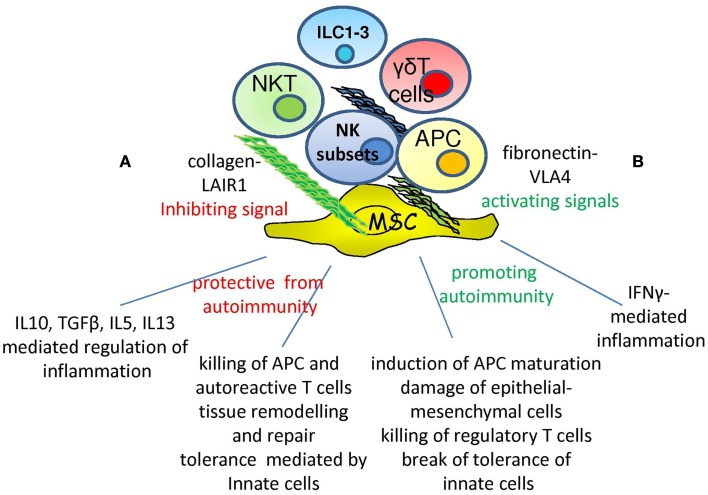Figure 1.
Opposite roles of NK cells in autoimmunity. Within microenvironment the interaction of specific NK cell receptor with extracellular-matrix can deliver different signals depending on the type of receptor involved: LAIR1–collagen interaction would lead to inhibition while VLA4-fibronectin engagement to activation. Depending on the type of NK cell subset involved, NK cells show the ability of protecting from the occurrence of autoimmunity (A) through the secretion of immune-regulating cytokines as IL10, TGFβ, IL5, and IL13. In addition, they can eliminate APC and autoreactive T cells through the triggering of activating receptors or regulate tissue homeostasis. On the other hand, NK cells can aggress tissues inducing inflammation through IFNγ production (B), favoring the maturation of APC with the consequent triggering of adaptive immune response. Killing and damaging parenchymal, epithelial, and mesenchymal cells eventually lead to an altered tissue homeostasis and then to autoimmunity. ILC1-3, NKT, and γδT cells are involved and may regulate the NK cell–microenvironment interactions.

